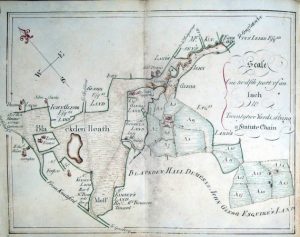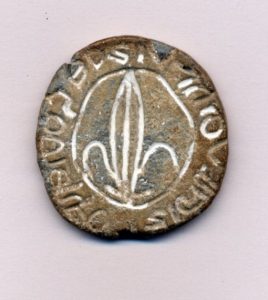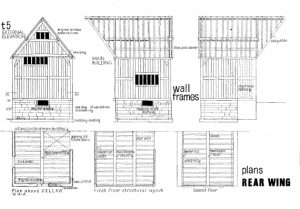Research
We welcome contacts from students in higher education and members of the public who would like to make use of Blackden resources for original research (a current study of apotropaic deposits in UK buildings is an example). Contact us if you would like to discuss a research question.
Our education workshops and course work is research-led. At any given time, we are looking for answers to new questions, and those who visit us become involved in our search.
Our large collections of ceramics from the site are ideal for introducing the concept of question-led history. How were vessels brought to the site at different times? Were some made locally and others made by larger commercial concerns at a distance? How far did they travel from their places of manufacture? What did they contain? What can we learn from the distributions of sherds?
Research at Blackden is interdisciplinary. Two current projects will give a sense of our range. The timbers of The Old Medicine House link us to historical ecology. The largest trees would have been saplings in the fourteenth century. Study of these trees (e.g. their branch patterns, posture of trunk, evidence of woodland management, signs of pest attack), plus aspects of evidence of the rings, coupled with information from written records, will give insight into the conditons of the woodland from which they were taken.
Or again: groundworks in advance of reassembly of The Old Medicine House in 1971 disturbed a deposit of calcined bone and charcoal. Analysis shows this to have been a cremation – probably an outlier to a large barrow cemetery that extends across neighbouring fields. Radiocarbon dating places the funeral between 3,700 and 3,900 years ago, while recent study of the bone fragments shows that the cremation included several children, an adult, and animals. The arrival of The Old Medicine House thus occasioned an encounter with people of 39 centuries ago. Those people lived in an age of intense curiosity about the heavens. How appropriate, then, that Blackden is within the buffer zone of the Jodrell Bank candidate World Heritage Site, that the Lovell Telescope stands within the bounds of the medieval township of Blackden, and that discoveries here link visitors with the astronomical continuum at which the Lovell telescope looks.
Resources
Blackden would have been ideal for occupation as a winter camp at the start of the Mesolithic, c.8000 BC. The archaeological evidence supports this, and also hints at activity here in the Upper Palaeolithic.
The same features attracted settlement in subsequent periods. Each of later prehistory’s conventional ages – Neolithic, Bronze Age and Iron Age (including Rome’s colonialism) – is represented by artefacts from the site (available to see when you visit) whilst materials such as glass, metallurgical waste and pottery witness people living or working before the present Toad Hall was built around the end of the Middle Ages.
Whether this long sequence reflects uninterrupted settlement or a series of episodes is a question for research. Your research, perhaps?
The Bronze Age is particularly well represented at Blackden, with burials intercalated between other land-uses. So, another research question has to be whether the entire landscape, as distinct from reserved areas within it, was suffused by rituality. As new evidence emerges, ideas continue to change. Bring your own ideas when you visit – we love to explore these, and many other questions, together.
We have historic maps and aerial photographs of the area, copies of wills and probate inventories of past occupants of the houses, photographs of objects and events associated with the Trust, and the unique architectural record of the survey, dismantling, moving, repair and re-erection of The Old Medicine House. These include the architect’s plans, elevations and instructions to craftsmen.
The film of the moving of The Old Medicine House and over 4,000 slides of the procedure will be digitised and, when completed, the entire archive will be available to researchers.



The first image is the “Plan and Survey Book of Heawood Demesne 1789”
Reproduced by kind permission of the Chetham’s Library, Manchester
